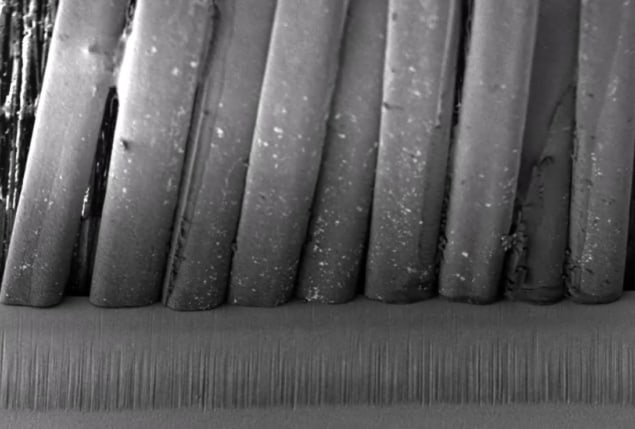
New insights into why a hard steel razor blade is dulled by cutting soft hairs have been gained by a trio of researchers at the Massachusetts Institute of Technology. Gianluca Roscioli, Seyedeh Mohadeseh Taheri-Mousavi and Cemal Cem Tasan did a series of experiments that recreate the shaving process and found that dulling is a result of microscopic variations in the structure of a blade and the angle at which a cut is made. The team suggests that nanoscale improvements to blades could boost the performance of cutting tools.
Most modern cutting edges are made of hardened steel, which is much harder than commonly cut materials such as hair and food. Indeed, the steel used to make razors is more than 50-times harder than human hair. As a result, scientists have long been puzzled exactly why such blades dull so rapidly after cutting seemingly soft materials.
It had long been assumed that sharp edges are dulled by basic wear mechanisms such as the cracking of brittle steel surfaces and the rounding of edges. However, little had been known about how these processes relate to the complex ways that blades and materials interact during the cutting process on a microscopic scale.
Roscioli and colleagues investigated this process by using an electron microscope to observe how commercial razor blades cut individual hairs and bunches of hair in real time. They found that two things affected how the blades were dulled by cutting the hair.
Perpendicular shear
When a razorblade slices through a hair that is fixed to the skin, the hair bends away from the blade – thus changing the cutting angle. At some angles, the blade is subject to a large shear force that is perpendicular to the sharp edge. The team believe this causes the deformation and chipping of the blade — because this damage was not observed in experiments where the cutting angle was controlled to eliminate perpendicular shear.
The second thing that appeared to affect the dulling process is microstructural variation along the edge of the blade. A steel blade is made of tiny microstructures, some of which are stiff and some of which are compliant. Normally, this composition is advantageous because it prevents the propagation of cracks. But the material can be damaged if a compliant region of the blade does the brunt of the cutting. In the razor blades studied by the team, the chances of this occurring depended both on the size of the microstructures and the position of the boundary between stiff and compliant regions within the cross section of a hair.
The team concludes that razor blades and other sharp tools could be improved by using more homogenous microstructures at the cutting edge. This could be achieved using nanostructured alloys, for example.
The research is described in Science.



